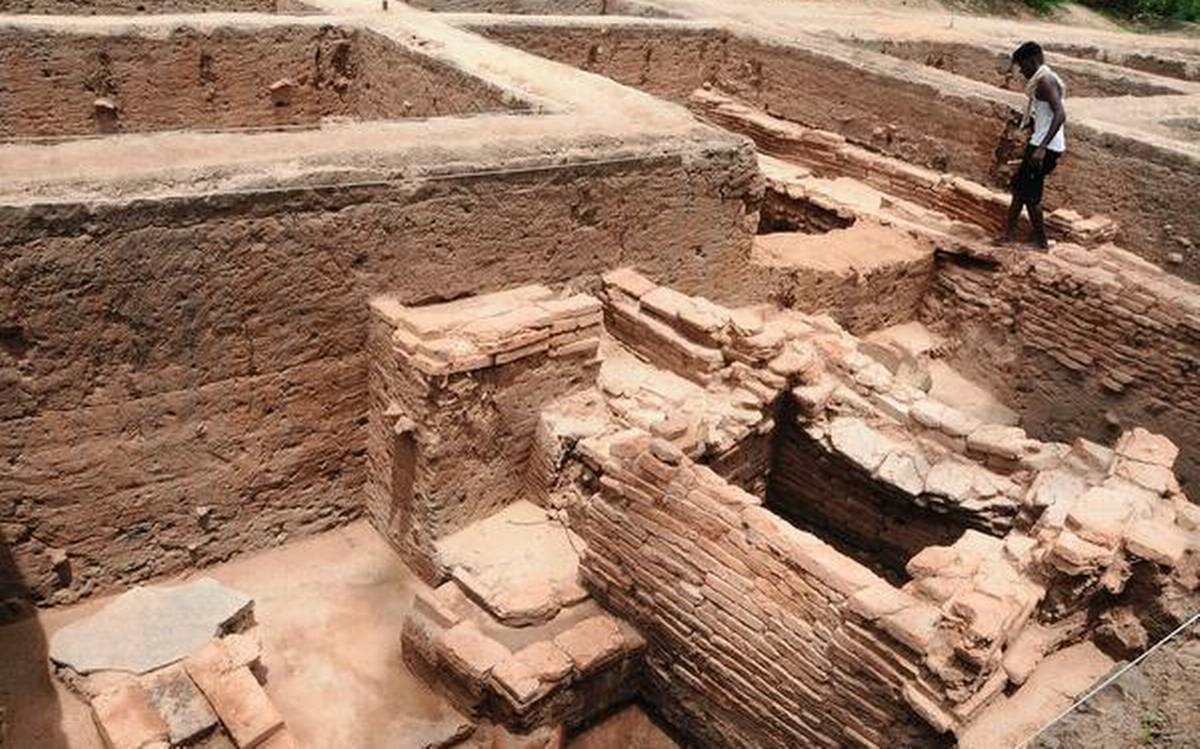தமிழரின் தாய்மடியான கீழடியில் அடுத்த கட்ட அகழாய்வினை தமிழக தொல்லியல்துறை தொடங்கியுள்ளது. இதுவரை நடந்த அகழ்வாராய்ச்சியினைவிட இந்த அகழ்வாராய்ச்சி மிகவும் முக்கியத்துவம் வாய்ந்தது என எதிர்பார்க்கப்படுகிறது.
காரணம் இந்த அகழ்வாராய்ச்சியில், கீழடியை சுற்றியுள்ள அகரம், மணலூர் மற்றும் கொந்தகை போன்ற பகுதிகளிலும் ஆராய்ச்சி நடக்கவிருக்கிறது. இதில் கொந்தகை ஒரு ஈமக்காடு. எனவே இந்த ஆராய்ச்சியில் மனித எலும்புக்கூடுகள் கிடைத்துள்ளது. இந்த மனித எலும்புக்கூட்டினை ஆராய, உலகின் முன்னணி ஆராய்ச்சியாளரான ஹார்வர்ட் பல்கலைக்கழகத்தை சேர்ந்த டேவிட் ரெய்ச் (David Reich) என்பவருடன் தமிழ்நாடு அரசும் மதுரை காமராஜர் பல்கலைக்கழகமும் புரிந்துணர்வு ஒப்பந்தம் செய்துள்ளன.
இந்த எலும்புக்கூட்டின் மரபணுவை சிந்து சமவெளியில் கிடைத்த எலும்புக்கூட்டுடன் ஒப்பிட்டு அவை ஒரே மாதிரியாக இருந்தால் சிந்து சமவெளியம் ஒரு தமிழர் நாகரிகமே, இந்தியாவின் பூர்வகுடிகள் தமிழர்களே என ஆதாரபூர்வமாக நிறுவ முடியும். கீழடி ஒரு மீள் பார்வை, கீழடியில் மேற்கொண்ட தொல்லியல் ஆய்வில் கிடைத்த பொருட்களை ஆராய்ந்ததில் கீழடி சுமார் 2600 வருடம் பழமையானது என்று தமிழகத் தொல்லியல் துறை தெரிவித்துள்ளது. கீழடியில் 353 செ.மீ. ஆழத்தில் கிடைத்த பொருள் கி.மு. 580வது ஆண்டையும் 200 செ.மீ. ஆழத்தில் கிடைத்த பொருள் கி.மு. 205வது ஆண்டையும் சேர்ந்தது எனக் கண்டறியப்பட்டுள்ளது.
கீழடியிலிருந்து கிட்டத்தட்ட 70 எலும்புத் துண்டுகள் கண்டெடுக்கப்பட்டன. இவற்றில் பெரும்பாலானவை காளை, எருமை, ஆடு, பசு ஆகியவற்றினுடையவை. கீழடி அகழ்வாய்வில் தமிழ் பிராமி எழுத்துகள் பொறிக்கப்பட்ட 56 பானை ஓடுகள் கிடைத்துள்ளன. இவற்றில் குவிரன், ஆதன் உள்ளிட்ட பெயர்களும் எழுதப்பட்டுள்ளன. கீழடியில் சுடுமண்ணாலான 13 மனித உருவங்கள், 3 விலங்கு உருவங்கள், விளையாட்டுப் பொருட்கள், கிடைத்துள்ளன. ஆனால், வழிபாடு, மதம், சாதி தொடர்பான எவையும் இதுவரை கிடைக்கவில்லை.
English Translation of the Above Article:
A recent excavation in Keezhadi (Keeladi), Sivagangai district of Tamilnadu revealed the 2600 years old Tamil civilization. The carbon dating of artifacts found in Keezhadi was sent to Beta analytics, USA and results revealed that one of the artifacts belongs to BC 580 and another one belongs to BC 205. This proves that Keezhadi is the oldest civilization and which is developed along with the Ganges civilization. Some of the artifacts excavated in Keezhadi have a connection with the Indus valley civilization. Particularly the scrips found in Kezhadi pottery has similarity with the scripts of Indus valley civilization. Also, 70 bones were excavated from Keezhadi, among them, 50 % belongs to Bull’s, interestingly the bulls were the same with the bulls of Indus valley civilization. In previous excavation, Black and red potteries were excavated from Keezhadi, which is predominantly found in Indus valley civilization.
These findings confirm that there is a strong connection between Keezhadi and Indus valley civilization. During the current excavation in Keezhadi, 7 golden ornaments were excavated including a pendant, ring, needle, beads, button, and plate. In previous excavation in Keezhadi, metal smelting industries were identified. Along with these artifacts, some Chess coins and other game coins were identified in Keezhadi. Moreover, there is no sign of religion, and god idols were identified in Keezhadi, but the idols of humans and animals were excavated from keezhadi, which confirms that Tamils have no religion and they worshiped ancestors. The Tamilnadu archeological department said that in the next phase of excavation they are going to collaborate with the Harvard Medical School and Madurai Kamarajar University. And next phase excavation will be conducted in the surrounding places of Keezhadi such as Konthagai, Agaram, and Manaloor. Finally, after many struggles, Keezhadi results were published and which confirms that the Tamil civilization is the oldest civilization in India. Further researches should be made to confirm that the Tamils are the native people of the Indian subcontinent.
–நன்றி. SangathamizhanTV


